In my childhood there was a television western series named “Death Valley Days.”
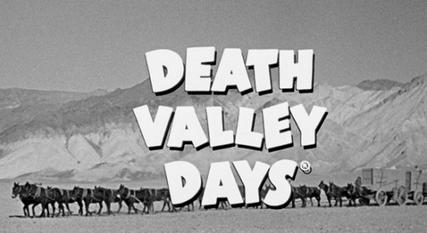
The stories were another of Hollywood’s versions of the “old west,” primarily set in the bitterly harsh desert of California’s Death Valley. As we learned, things were tough in them thar days, and the people were even tougher.
The program — which originated on radio in 1930 — was a slam-bang triumph of what we call “product placement” today. Sponsored by the Pacific Coast Borax Company — later the U.S. Borax Co. — the stories often revolved around one of the only justifiable reasons for non-tourists to even set foot in Death Valley: borax mining, the business of the Borax Co. Luckily, the company possessed one of the world’s most iconic, photogenic product identifiers ever devised. Look at that title graphic above; it’s the Twenty Mule Team Wagon Train. Here’s an archival photo of a twenty mule team wagon train.
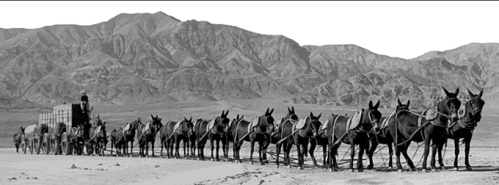
Borax deposits were discovered in Death Valley in 1881. Borax is valuable for household cleaners and a number of industrial uses, including glass manufacturing, glazes and gold refining. It was hard labor to dig it from the extreme conditions in Death Valley. Complicating matters was the fact that the nearest railroad for transporting ore was 165 miles away in Mojave, California. To haul the ore to the railhead, the proprietor of the mining operation contracted with a Mojave wagon maker to build five of the biggest wagons he could manage. He did.
Built of wood, the wagons were 16 feet long, four feet wide and six feet deep.
The rear wheels were seven feet in diameter, five feet in front. Those iron “tires” around the wheels were 8″ wide and 1″ thick. Each rear wheel weighed 1,000 pounds.
The standard rig with two wagons and a large water tank wagon to supply the two-member crew and draft animals extended 65 feet and weighed 35 tons when loaded.
Motive power? Mule power. Each train was pulled by 20 mules hitched in pairs, connected by long traces made of chains. Assembled, the entire train was 165 feet long.
A single driver — a “muleskinner” — drove the train, with one helper, called a “swamper,” whose job included working the brake on the second wagon. Here’s a detail of a rear wheel and the large wooden brake shoe on the left.
The trip to Mojave generally took 10 days. Then, 10 days to return, carrying supplies or equipment for the mine.
Two original wagons still exist, on display in Death Valley National Park. Click here for information.
The pictures in this post show detailed replicas of two wagons displayed at the Laws Railroad Museum in California’s Owens Valley. Built in 2016, they’re an impressive demonstration of an antique craft.
The 20 mule team wagon trains had a relatively short run: 1883-1889. But a photograph of a 20 mule team became the corporate symbol for the Borax Co., and has endured for more than 100 years. It may be one of the greatest marketing feats in the history of branding. I was in the laundry supply aisle of the store today, and shot this photo.

There’s the 20 mule team on the boxes, still hauling away. An open-pit mine in Boron, California, south of Death Valley, still produces about half the world’s borates, but without mules.
Seeing the 20 Mule Team Wagons
The Laws Railroad Museum is 4.5 miles north of Bishop, California, about 300 miles north of Los Angeles via U.S. Route 395 through the Eastern Sierra. At the north end of Bishop, where 395 bends left, bear right onto U.S. Route 6 toward Tonopah. A sign directs you to the easy-to-find 11-acre museum site on Silver Canyon Road, which looks like this from the road.

The visitor entrance is at that building you glimpse to the right — the 1883 depot. There’s plenty of parking. As I wrote in a previous post, the museum is extensive, with buildings and exhibits devoted to all aspects of life in the former railroad depot village and the surrounding area. I especially enjoyed seeing the recreation of the iconic old wagons.
Click the museum link above for latest hours of operation, suggested visitor donation amount, etc. It’s an all-volunteer operation. Find a museum volunteer and engage them in conversation. Travel is always improved by speaking with the locals.
Licensable, high resolution versions of my wagon photographs in this post, and select images from other Under Western Skies posts are available on Shutterstock.com. Click on the linked photos, or CLICK HERE to view the Underawesternsky photo portfolio.
© Brad Nixon 2018. Pacific Coast Borax Company, U.S. Borax Company and 20 Mule Team Borax are registered trademarks of Rio Tinto Borax. No endorsement of the products or Rio Tinto Global are intended. “Death Valley Days” and the title graphic are presumably someone’s property, and should not be used commercially without permission.
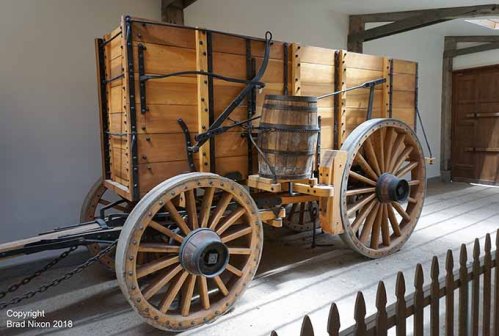


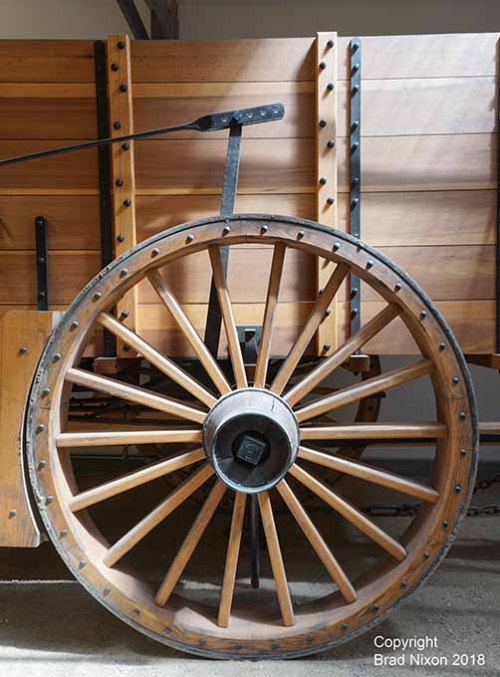
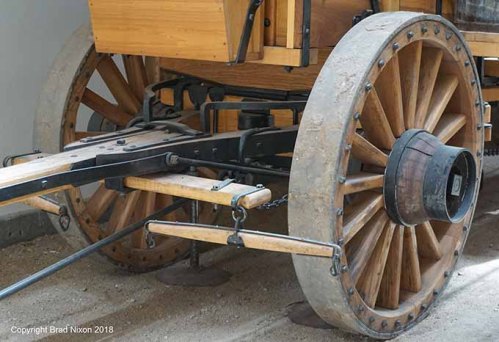
Hey! Thanks Brad, I always wondered about that.
LikeLike
By: Brian Doerter on September 24, 2018
at 6:15 am
Part of the service
LikeLike
By: Brad Nixon on September 24, 2018
at 7:12 am
Nice photos, I didn’t know borax was minned. I always thought it was an industrial process. Those wagons look pretty rough I bet they had a very bumpy ride on those dusty dirty roads.
LikeLiked by 1 person
By: shawnthompsonart on September 24, 2018
at 7:14 pm
I’m betting you’re right.
LikeLike
By: Brad Nixon on September 24, 2018
at 7:31 pm
I remember watching that show, too.
And, I use Borax today as a laundry detergent booster (to break up the hard water minerals). Despite that, I hadn’t thought of the old tv show for DECADES. Thanks for the memories!
LikeLike
By: LaBoheme on September 24, 2018
at 10:55 pm
You’re welcome. The Old Ranger thanks you for tuning in, as do Ronnie Reagan, Rosemary DeCamp and the program hosts who succeeded them.
LikeLike
By: Brad Nixon on September 24, 2018
at 11:16 pm
I remember watching Death Valley Days. Ronald Reagan was the host.
LikeLike
By: Firelands on September 26, 2018
at 4:56 am
I looked into the background of the show to write the post, since my memory is vague, at best. Reagan succeeded Stanley Andrews, “The Old Ranger.” Reagan was 1964-65, then Rosemary DeCamp, Robert Taylor and Dale Robertson. I go back far enough that I remember watching The Old Ranger.
LikeLike
By: Brad Nixon on September 26, 2018
at 8:21 am
One of my mother’s favorite stories was of listening to Dutch Reagan as a sports announcer out of WHO in Des Moines. I didn’t know he was associated with Death Valley Days, but I don’t remember watching the show, either. I do remember Borax. It was a laundry staple for my mother, and when I read your title, the first thing that came to mind was “borax.”
Those wagons are something. They’re really quite beautiful. That’s a museum I’d love to visit.
LikeLiked by 1 person
By: shoreacres on October 5, 2018
at 8:17 am
While most of my media memories from childhood revolve around TV, I still have part of what our parents’ and grandparents’ eras had: hearing those big, clear-channel radio stations — WLS, WLW, WOR, WGN, and many others — especially at night. They shaped part of the modern media landscape. I think of the vast popularity of the St. Louis Cardinals baseball team across a huge swath of the country thanks to both KMOX and WHO. Before TV, there was no need to expand baseball into new markets; you could be a Cardinals fan in Missoula or Springfield, IL or Little Rock and hear every game. And a Dutch Reagan wasn’t a local voice — he had REACH. I listened to the Clay-Liston fight from Lewiston, Maine on my transistor on one of those 50,000-watt waves, maybe WOR or WBZ. Living just 10 miles from the mammoth transmitter tower for WLW, Cincinnati, we could get Reds broadcasts on any available line of steel fencing or grandpa’s tooth fillings when the atmospheric conditions were right (exaggeration – local joke).
LikeLike
By: Brad Nixon on October 5, 2018
at 8:46 am
But maybe not entirely an exaggeration — and certainly not just a local joke.
We shouldn’t forget Wolfman Jack, blasting out that non-parentally approved programming from across the border, and then later from the Mighty 1090. There was magic in trying to fine-tune that dial.
We tend to forget how communal radio listening was in those early days, too. If you haven’t seen this video of the John Hartford classic, I think you’ll enjoy it.
LikeLiked by 1 person
By: shoreacres on October 5, 2018
at 10:05 am
Delightful, thanks. Radio was a powerful force we can never appreciate. In the Italian American Museum in downtown LA, there’s shortwave radio console from the home of a resident in LA’s large Italian community. During the war, suspect people like citizens of Japanese, Italian and German descent were forbidden to own short-wave units, because obviously they were spies. This family simply removed the portion of the dial that SHOWED the shortwave band, although it still functioned, so they could hear the war news from BBC, etc. Individuals in countries today enduring blackouts of Internet access are replicating the same action in the digital realm. Loved the photos in the video. Thanks.
LikeLiked by 1 person
By: Brad Nixon on October 5, 2018
at 10:17 am